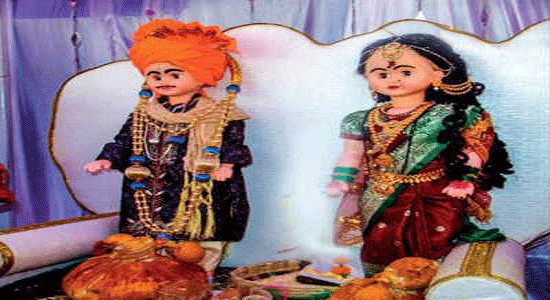 Kudos
Kudos to Sona, a 17-year-old resident of Tagarpar village, Satna, Madhya Pradesh, for calling off her wedding during her mehendi ceremony. Clearly, the courage shown by Sona is unprecedented! Thousands of girls in India today would remain unaware of the consequences of child marriage, fear vocalising their rights and submit to the mediocre decisions of their families.
In a country such as ours which is on a steady path of development and with existence of stringent laws such as the Prohibition of Child Marriage Act, 2006, the Compulsory Registration of Marriage Bill 2005, one would naturally assume that Child marriages as a phenomenon would cease to exist. However, while the recent findings of the National Family Health Survey (NFHS) have been promising, showing a decline from 47% in 2005-06 to 26.8 % in 2015-16 on child marriage indices, yet, geographical variations still exist with over half of child brides continuing to live in Uttar Pradesh, Bihar, West Bengal, Maharashtra and Madhya Pradesh.
Sona, was lucky as she was able to find support and dared to take a stand. Not everyone else is that privileged.
As per UNICEF’s report Ending Child Marriage: A profile of child marriage in India’, one in three of the worlds child brides live in India. Of the country’s 223 million child brides, 102 million were married before they even turned 15. We still have more than 102 million adolescents who were married before they turned fifteen.
This is indeed a violation of human rights and a complex issue to tackle. While overarching reason of persistent poverty, economic backwardness and gender inequality serve as primary propellers of child marriage, the act of marrying girls off at a young age also impacts their nutrition & mental health levels. While families are known to still justify child marriage on the pretext that this will prevent their girls from becoming sexually active before marriage , the act in itself closes several educational, skilling and growth opportunities for girls forever. Most child brides give birth as adolescents and tend to bear more children than those married at legally permissible ages.
Another reason for continuation of such a practice is lack of law enforcement and limited knowledge and apathy among communities about legal consequences. The burden to prove the invalidity of the marriage also lies with the minor. As per the PMCA, if the petitioner is a minor, a petition can be filed only through a guardian or the next best friend of the married child (who must be an adult) with help from the child marriage prohibition officer, who is rarely reprimanded for dereliction of duty. This form of justice is cumbersome, and less from ideal as often the eco-system of the child bride (or groom) is party to the practice.
Thus, while India’s progress in combating child marriage over the past decade has been one of the strongest among countries in South Asia, this is moment that calls for much stricter enforcement of the law and greater sensitization of communities on the consequences of child marriage on the lives and wellbeing of millions of our girls.
In the absence of the same, positive attempts made to empower girls under Beti Bachao- Beti Parhao, provision of life skill education under school and college education initiatives and health schemes such as Ayushman Bhart run risk of overlooking the lives of our girls who still succumb to this social injustice.
Girls at risk now need to be seen as a special group with specific needs and Indian states/geographies that continue to perform poorly on child marriage indices need to accept this reality and launch specialised targeted initiatives and schemes. It is also time to build on best practice models launched by civil society, establish inter-ministerial commitment, forge convergence by enforcement agencies on the ground to implement stringent child protection policies. All these efforts will also need to be four times faster than last 10 years to reach our goals of NO Child marriages in India.
Left unaddressed, gender subjugation and poverty will continue to be intrinsically linked to the equitable growth and development of the country and girls like Sona who sought to be vocal & fight for their rights would be the exception than the norm.
- Seema Gupta is a senior health and development professional with more than 22 years of experience in the area of gender equality, sexual reproductive health, health policy and tobacco control.
 Kudos to Sona, a 17-year-old resident of Tagarpar village, Satna, Madhya Pradesh, for calling off her wedding during her mehendi ceremony. Clearly, the courage shown by Sona is unprecedented! Thousands of girls in India today would remain unaware of the consequences of child marriage, fear vocalising their rights and submit to the mediocre decisions of their families.
Kudos to Sona, a 17-year-old resident of Tagarpar village, Satna, Madhya Pradesh, for calling off her wedding during her mehendi ceremony. Clearly, the courage shown by Sona is unprecedented! Thousands of girls in India today would remain unaware of the consequences of child marriage, fear vocalising their rights and submit to the mediocre decisions of their families. 